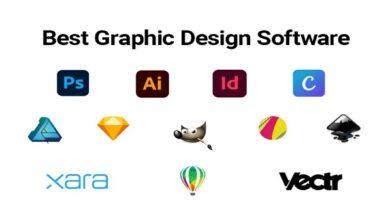Integrating Customer Communication Software with Your CRM: A Step-by-Step Guide

In today’s competitive business landscape, efficient and streamlined communication with customers is crucial for success. To achieve this, many companies turn to customer communication software and Customer Relationship Management (CRM) systems. Integrating these two powerful tools can significantly enhance functionality, improve customer experience, and drive growth. This guide will walk you through the process of integrating customer communication software with your existing CRM, providing practical advice to help you get started.
Why Integrate Customer Communication Software with Your CRM?
Before diving into the step-by-step guide, it’s essential to understand why integrating customer communication software with your CRM is beneficial.
- Centralized Data Management: When communication software and CRM are integrated, all customer interactions—whether through email, chat, phone, or social media—are stored in one centralized system. This ensures that all team members have access to up-to-date customer information, leading to more personalized and effective communication.
- Improved Customer Experience: By having all customer interactions in one place, you can provide faster and more accurate responses to customer inquiries. This leads to a more seamless customer experience and enhances customer satisfaction and loyalty.
- Enhanced Team Collaboration: Integration allows different departments, such as sales, marketing, and customer support, to work more cohesively. Teams can easily share information and insights, leading to more coordinated efforts and better customer service.
- Automation of Routine Tasks: Integrating customer communication software with your CRM can automate repetitive tasks, such as logging calls or emails. This reduces manual work, saves time, and allows your team to focus on more strategic activities.
- Better Analytics and Reporting: Integration provides a comprehensive view of all customer interactions, which is invaluable for analyzing customer behavior and preferences. This data can be used to refine marketing strategies, improve customer service, and ultimately drive business growth.
Step-by-Step Guide to Integrating Customer Communication Software with Your CRM
Now that we understand the benefits, let’s explore the steps involved in integrating customer communication software with your CRM.
Step 1: Assess Your Needs and Objectives
Before starting the integration process, it is crucial to assess your business needs and objectives. Ask yourself the following questions:
- What are the primary goals for integrating customer communication software with your CRM?
- Which communication channels (e.g., email, chat, social media) do you use most frequently?
- What CRM and customer communication software are currently in use?
- What are the specific features you need from the integration (e.g., automated data entry, unified dashboards)?
Answering these questions will help you identify the scope of the integration and select the right tools and features that align with your business objectives.
Step 2: Choose the Right Customer Communication Software
Choosing the right customer communication software is crucial for a successful integration. Consider the following factors when selecting software:
- Compatibility: Ensure that the software is compatible with your existing CRM. Check for available plugins or APIs that facilitate integration.
- Scalability: Choose software that can scale with your business growth. This ensures that you won’t need to switch tools as your communication needs evolve.
- Features: Evaluate the features offered by the software. Look for features like automated workflows, multi-channel communication support, and real-time analytics that align with your business requirements.
- User-Friendliness: Select software that is intuitive and easy to use. A steep learning curve can hinder user adoption and reduce the effectiveness of the integration.
Step 3: Plan the Integration Process
Once you’ve chosen the right customer communication software, it’s time to plan the integration process. This involves:
- Mapping Out Data Flow: Define how data will flow between the customer communication software and your CRM. Identify which data fields need to be synchronized and how frequently the data should be updated.
- Identifying Key Stakeholders: Involve key stakeholders, such as IT, sales, marketing, and customer service teams, in the planning process. Their input is essential for ensuring that the integration meets the needs of all departments.
- Setting Clear Objectives and Timelines: Establish clear objectives for the integration, such as reducing response times or improving data accuracy. Set realistic timelines for each stage of the integration process.
Step 4: Configure the Integration
The next step is to configure the integration. This usually involves the following tasks:
- Installing Plugins or Connectors: Most customer communication software and CRM systems offer plugins or connectors that facilitate integration. Install the necessary plugins or connectors and follow the setup instructions provided by the software vendors.
- Customizing Data Fields: Customize the data fields in both the CRM and communication software to ensure seamless data synchronization. For example, if your CRM has a custom field for customer preferences, ensure that this field is also available in the communication software.
- Setting Up Automation Rules: Configure automation rules to streamline workflows. For example, you can set up rules to automatically log all customer emails or chat conversations in the CRM.
Step 5: Test the Integration
Testing is a critical step in the integration process. It helps identify any issues or gaps that need to be addressed before going live.
- Conduct Initial Testing: Perform initial testing by integrating a small set of data. Check for data accuracy, synchronization speed, and functionality.
- Involve Key Users in Testing: Involve key users, such as customer service representatives and sales agents, in the testing process. Their feedback will help identify any usability issues and ensure that the integration meets their needs.
- Address Issues and Fine-Tune Configuration: Address any issues identified during testing and fine-tune the integration configuration as needed. This may involve adjusting data mapping, modifying automation rules, or tweaking user permissions.
Step 6: Go Live and Monitor Performance
Once testing is complete and any issues have been resolved, it’s time to go live with the integration. However, the process doesn’t end here.
- Monitor Performance Regularly: Monitor the integration performance regularly to ensure that it is functioning as expected. Check for data synchronization errors, slow response times, and other issues that may affect functionality.
- Gather Feedback from Users: Continue to gather feedback from users to identify any challenges or areas for improvement. User feedback is invaluable for optimizing the integration and ensuring a smooth user experience.
- Make Necessary Adjustments: Based on performance monitoring and user feedback, make any necessary adjustments to the integration. This could include refining automation rules, adding new features, or optimizing data synchronization settings.
Best Practices for Integrating Customer Communication Software with Your CRM
To ensure a successful integration, consider the following best practices:
- Keep User Training in Mind: Even the best integration won’t be effective if users don’t know how to use it. Invest in user training to ensure that all team members understand how to use the integrated system effectively.
- Prioritize Data Security: Ensure that the integration does not compromise data security. Implement strong access controls, encrypt sensitive data, and regularly update software to protect against vulnerabilities.
- Maintain Regular Backups: Regularly back up data to prevent loss in case of integration failure or system errors. This is especially important for critical customer data.
- Stay Updated on Software Changes: Software vendors regularly update their products with new features and security enhancements. Stay updated on these changes and apply updates to ensure optimal performance and security.
- Evaluate Integration Performance Periodically: Periodically evaluate the integration performance against your initial objectives. This will help you identify any areas that need improvement and ensure that the integration continues to deliver value.
Conclusion
Integrating customer communication software with your CRM is a powerful way to enhance functionality, improve customer experience, and drive business growth. By following this step-by-step guide and adhering to best practices, you can ensure a successful integration that meets your business needs and objectives. Remember that integration is not a one-time task but an ongoing process that requires continuous monitoring and optimization. With the right approach, you can maximize the benefits of integration and provide exceptional value to your customers.
